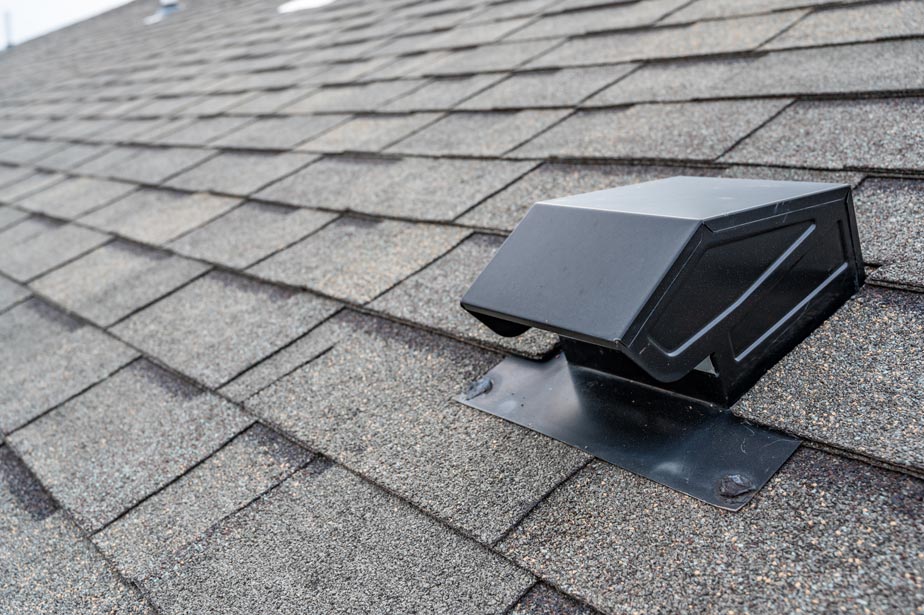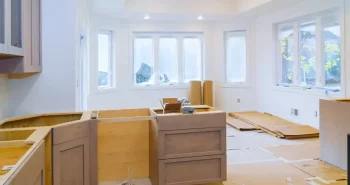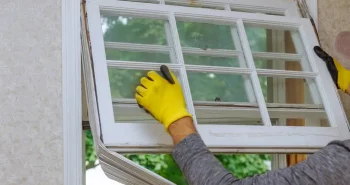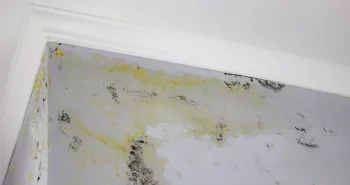Your home’s roofing system is comprised of variable parts that work together to provide a safe, comfortable internal environment. When one part of your roofing system fails, it can negatively affect the others and create problems for your home. This is especially true in regard to ventilation, which is also one of the most commonly neglected areas of residential and commercial roofs. To keep your home or business running smoothly, here’s how to choose the right ventilation for your roof.
The Importance of Attic Ventilation
Properly ventilated attics are essential to keeping your roofing system in good condition. Ventilation facilitates a healthy airflow throughout the building, which can, in turn, keep your roof protected from the inside out. Your roof’s ventilation works to protect your home in all climates, from harsh winters to sweltering summers. In fact, there are substantial benefits to proper attic ventilation. Some of the biggest benefits of ventilation include the following:
Improved Energy Efficiency
One of the biggest benefits of having adequate ventilation is improved energy efficiency throughout your home. When you have an excessive build-up of heat in your attic, your air conditioning is going to work harder to try and stabilize the interior temperature, thus driving up your monthly utility bills. When your attic is properly ventilated, your energy systems aren’t working overtime and are instead, working in conjunction with your exhaust and intake ventilation to create a stable temperature inside your home.
Control Your Home’s Temperature
As mentioned, adequate ventilation helps create a more stable temperature within your home, thus reducing utility bills. Not only is this beneficial for your wallet, but it allows you and your family to sit back and enjoy the environment inside your home without major fluctuations or extreme temperatures throughout the day. Proper ventilation gives you more control of your interior climate.
Prevents Moisture Damage
When airflow stops or is not strong enough, the accumulation of hot, humid air in the attic can lead to moisture damage. The longer the warm, stale air sits, the more condensation collects on your floorboards, walls, and insulation. Over time, this can lead to problems with mold, mildew, and even structural stability as water damage continues to seep through different areas of your home. When insulation is affected by moisture, it loses its effectiveness and further intensifies the problems. With proper ventilation, you’ll avoid moisture build-up and all of the damage that accompanies it.
Reduces Risk of Ice Dams
In cold winter months, improperly ventilated homes are susceptible to dangerous ice dams. An ice dam occurs when the attic heats the undermost layer of snow enough for it to melt and run down to the bottom of the slopes of your roof, which is not usually exposed to any heat that’s emanating from your attic. Then, as temperatures decrease, the melted snow re-freezes on the eaves and creates dangerous icicles or dams. As the cycle continues, the ice dam grows and becomes increasingly dangerous to your roofing structure. Eventually, ice dams can create substantial damages to shingles and lead to expensive repairs to your home’s interior. When you have the right amount of ventilation, you’ll reduce your risk of experiencing ice dams.
Increases Lifespan of Your Roof
While poor ventilation can lead to a number of problems, proper ventilation helps increase the overall lifespan of your roof. You won’t have to deal with water damage, problems with shingles, or potentially dangerous structural issues. Instead, you’ll be able to enjoy your roof for years without the need for a premature roof replacement.
Deters Pests and Problems
Finally, when your home has the right ventilation, you’ll reduce the risk of pests, rodents, and other vermin creating a home in your attic. During colder months, animals seek warm, covered areas for shelter. If your ventilation is lacking, your attic becomes the perfect place to create a home for the winter. When this happens, you’re going to be subject to all of the problems associated with infestation. Proper ventilation deters pests and the problems they create.
It’s not uncommon for poor ventilation to go unnoticed. As a homeowner, you can take a proactive approach to maintaining your home’s ventilation by keeping an eye out for any signs of a problem. The occurrence of rust, corrosion, dampness, water damage, frost, ice buildup, HVAC problems, or drastic changes to your heating or cooling bills can be indicative of inadequate ventilation. If you’re not sure whether your current ventilation is working as it should, schedule a consultation with a roofing contractor to get an inspection.
How to Calculate Ventilation for Your Home
You can calculate the amount of ventilation that your home needs using a few simple steps. You’ll need to go inside your attic for the most accurate results and take down length and width measurements of the attic floor space. This will allow you to calculate the square footage of your attic space, which is simply width times length. Once you have the square footage, you can compare it to the net free area needed in your attic using the 1:300 rule. With this rule, you’ll need at least 1 square foot of attic ventilation for every 300 square feet of attic floor space. Depending on the interior of your attic, you may need to double the total ventilation requirements. The ventilation will be split between intake and exhaust equally to avoid ineffective ventilation systems.
Different Types of Essential Ventilation for Your Home
To further explain the above requirements, it’s important to understand the two styles of ventilation that you need for a healthy airflow throughout your home and roof. The first is called exhaust ventilation, which lets out stale air. The second, intake ventilation, helps facilitate the intake of fresh air. When both types of ventilation are working correctly, you receive a healthy airflow throughout your roof.
Exhaust Ventilation
Hot air rises and accumulates in your attic, which can be detrimental to your roofing system over time. This is why exhaust ventilation is so important. Exhaust ventilation helps to push the hot air that has risen into your attic out of your home and back into the outside environment. Since hot air is often packed with moisture particles, this helps reduce the occurrence of water damage, mold, and mildew. Oftentimes, exhaust ventilation will be placed near the top of your roofing system to help accommodate the natural phenomenon of hot air rising. This is done by installing ridge vents and other types of exhaust ventilation. Your home is likely to have various different types of exhaust vents to improve ventilation efficiency.
Intake Ventilation
For even better ventilation, you want cool air to come into your home to help push out any excess or unwanted hot, condensed air. This is where intake ventilation comes in. Intake vents help to pull cool air in from outside or an external generator to push the hot air out of the attic and into the ecosphere outside. These two types of ventilation work together to create a comfortable indoor environment that helps keep your roof safe and secure.
When either of these systems aren’t working properly, you may notice problems with your home’s structural stability or air quality. This is why it’s essential to find a professional roofing contractor to complete an inspection if you suspect your ventilation is not working as it should.
Finding a Professional to Properly Install Roofing Ventilation
While you can calculate the ventilation requirements for your home, a professional roofing contractor will need to handle the installation process. Your roof is an interconnected, delicate unit so using professionals will ensure that your roof isn’t compromised during ventilation installation or repair. This is especially important if you plan to use skylights for your ventilation, as improperly installing them can lead to leaks, structural damage, and expensive repairs down the line. For all of your professional roofing needs, First Star Exteriors is here. Our contractors can determine the amount of ventilation your home needs, assess your current levels, and work to correct any discrepancies between the two. At First Star Exteriors, we pride ourselves on hands-on, personable partnerships with our clients, which is why we always work to make sure that your needs are met. Our team is dedicated to providing quality work with transparent and competitive pricing. To learn more about our ventilation services, or to receive a free quote within 48 hours, contact us today.





